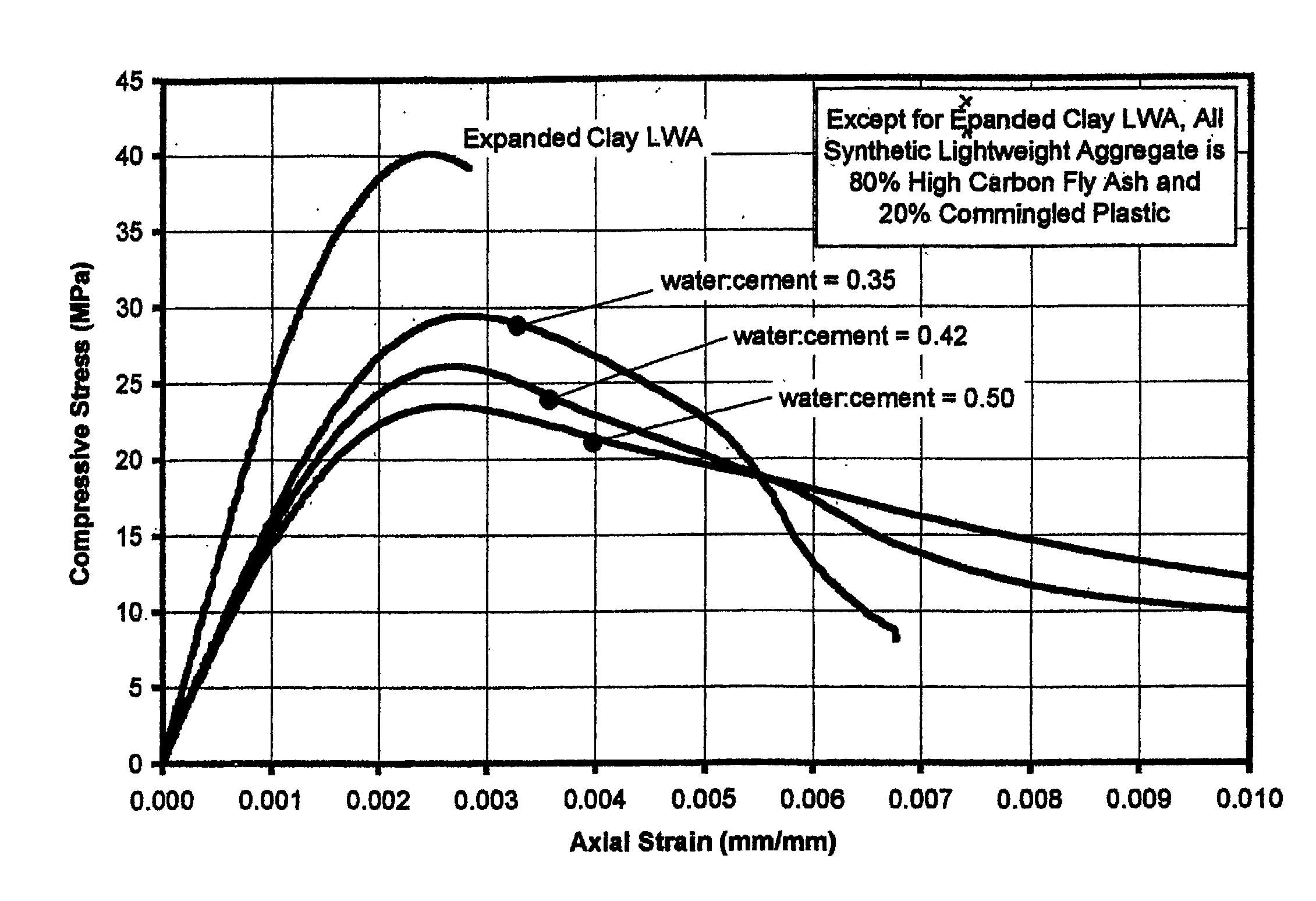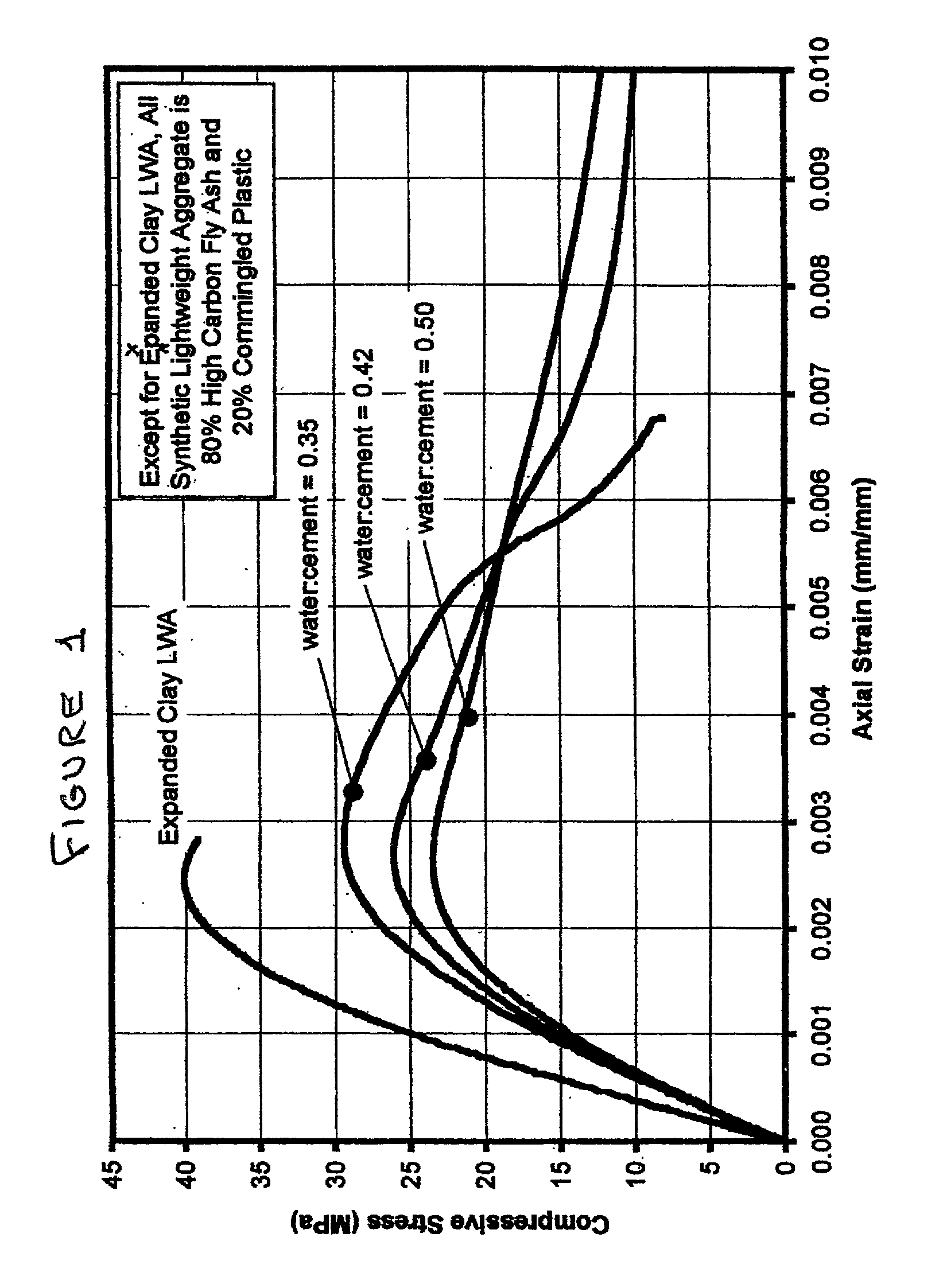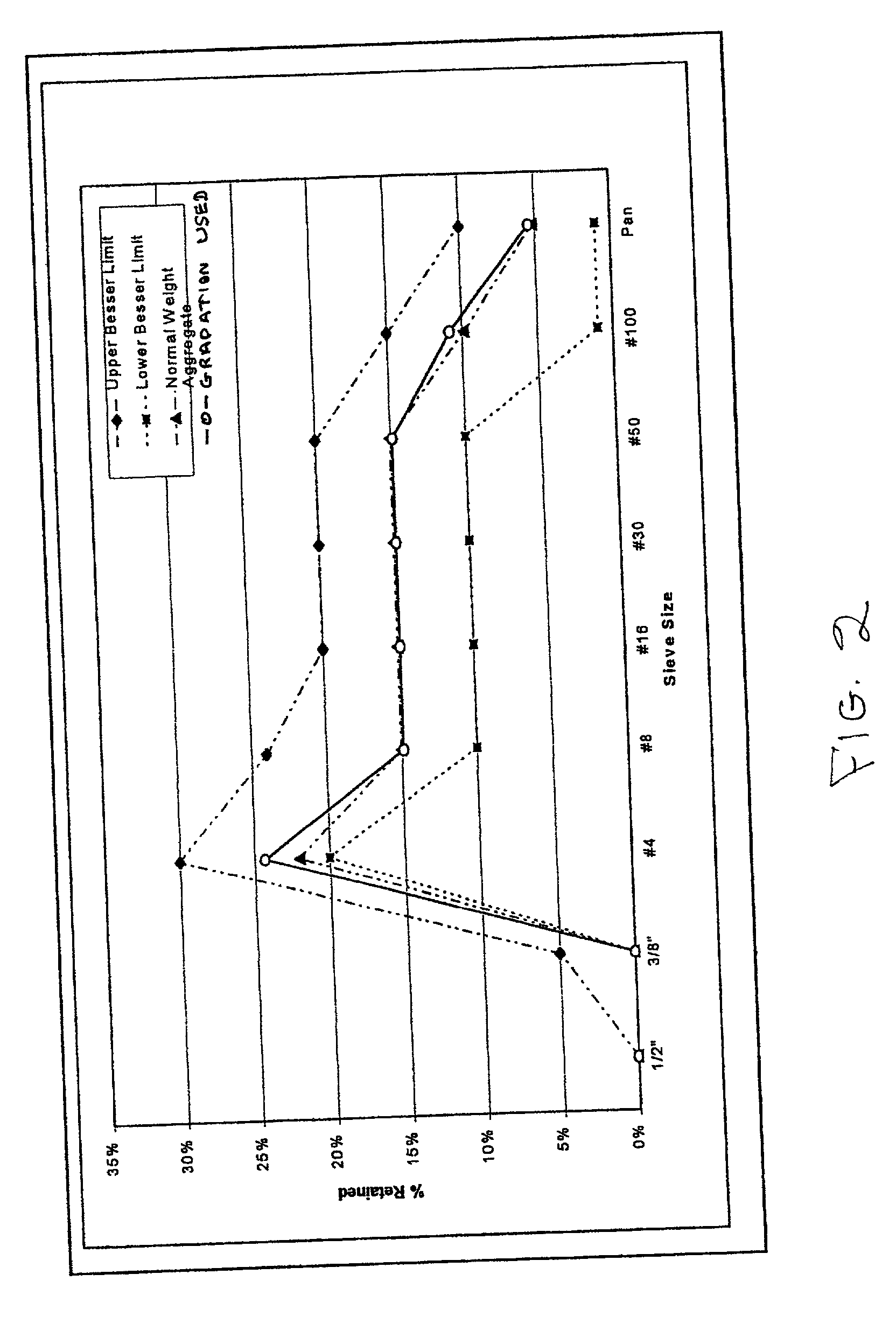Fly ash/mixed plastic aggregate and products made therefrom
a technology of mixed plastic aggregate and fly ash, which is applied in the direction of climate sustainability, solid waste management, sustainable waste treatment, etc., can solve the problems of large environmental impact of mining for aggregates, relatively high specific gravity of normal weight aggregates, and relatively scarce, so as to reduce the weight and reduce the properties. , the effect of small reduction
- Summary
- Abstract
- Description
- Claims
- Application Information
AI Technical Summary
Benefits of technology
Problems solved by technology
Method used
Image
Examples
example 2
[0041] Masonry blocks are classified by density and by strength. The density classification is given in Table 6 and identifies blocks as being lightweight, medium weight, or normal weight. Minimum strength requirements, given in Table 6, distinguish the blocks' capabilities for use in loadbearing (ASTM C90) or non-loadbearing (ASTM C129) applications.
[0042] Solid concrete masonry units are commonly referred to as concrete brick; hollow units are known as hollow blocks, concrete blocks, or cinder blocks. A block's net cross-sectional area is the distinguishing property for characterization as a solid or hollow block. ASTM C1232 defines a hollow unit as having a net cross-sectional area in every plane parallel to the bearing surface less than 75 percent of the cross-sectional area in the same plane. If the net cross-sectional area is greater than 75 percent of the cross-sectional area than the block is classified as a solid unit.
6TABLE 6 Density, kg / m.sub.3 (lbs / ft.sub.3) Compressive ...
example 3
[0051] Synthetic lightweight aggregate (SLA) comprising 80% hydrocarbon fly ash and 20% (by weight) mixed plastics having a PCCS #3-7 polymer distribution (see Table 1) were melt compounded as described earlier, and used as a portion of the aggregate in a hot mix asphalt for paving. The formulation used in shown in Table 10. The evaluation consisted of heating the SLA to a mixing temperatures (155 C., 310 F.), blending with hot virgin mineral aggregates and asphalt binder, compacting, and then saw-cutting the compacted specimens for observation. When heated, although the SLA became soft, the individual particles maintained their shapes and the particle size distribution appeared not to change. The SLA was effectively coated with the asphalt, the asphalt acting as a binder. The mix compacted similar to asphalt paving. After cooling, the SLA particles were observed as hard gray chunks, in a tightly bound, cohesive matrix. No flame treatment of the SLA was required in order to produce ...
PUM
| Property | Measurement | Unit |
|---|---|---|
| weight ratio | aaaaa | aaaaa |
| weight ratio | aaaaa | aaaaa |
| weight ratio | aaaaa | aaaaa |
Abstract
Description
Claims
Application Information
 Login to View More
Login to View More - R&D
- Intellectual Property
- Life Sciences
- Materials
- Tech Scout
- Unparalleled Data Quality
- Higher Quality Content
- 60% Fewer Hallucinations
Browse by: Latest US Patents, China's latest patents, Technical Efficacy Thesaurus, Application Domain, Technology Topic, Popular Technical Reports.
© 2025 PatSnap. All rights reserved.Legal|Privacy policy|Modern Slavery Act Transparency Statement|Sitemap|About US| Contact US: help@patsnap.com



